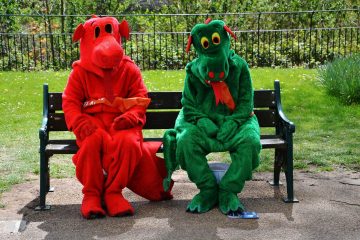

Jogging is a form of trotting or running at a slow or leisurely pace. The main intention is to increase physical fitness with less stress on the body than from faster running, or to maintain a steady speed for longer periods of time. Performed over long distances, it is a form of aerobic endurance training.
Jogging is running at a gentle pace.[1] The definition of jogging as compared with running is not standard. One definition describes jogging as running slower than 6 miles per hour (10 km/h).
Jogging is also distinguished from running by having a wider lateral spacing of foot strikes, creating side-to-side movement that likely adds stability at slower speeds or when coordination is lacking.[citation needed]
The word jog originated in England in the mid-16th century.The etymology of the word is unknown, but it may be related to shog or have been a new invention.[citation needed] In 1593, William Shakespeare wrote in Taming of the Shrew, “you may be jogging whiles your boots are green”. At that point, it usually meant to leave.
The term jog was often used in English and North American literature to describe short quick movements, either intentional or unintentional.[citation needed] It is also used to describe a quick, sharp shake or jar.[citation needed] Richard Jefferies, an English naturalist, wrote of “joggers”, describing them as quickly moving people who brushed others aside as they passed. This usage became common throughout the British Empire, and in his 1884 novel My Run Home, the Australian author Rolf Boldrewood wrote, “Your bedroom curtains were still drawn as I passed on my morning jog”.In the United States jogging was called “roadwork” when athletes in training, such as boxers, customarily ran several miles each day as part of their conditioning.[citation needed] In New Zealand during the 1960s or 1970s, the word “roadwork” was mostly supplanted by the word “jogging”, promoted by coach Arthur Lydiard, who is credited with popularizing jogging. The idea of jogging as an organised activity was mooted in a sports page article in the New Zealand Herald in February 1962, which told of a group of former athletes and fitness enthusiasts who would meet once a week to run for “fitness and sociability”. Since they would be jogging, the newspaper suggested that the club “may be called the Auckland Joggers’ Club”—which is thought to be the first use of the noun “jogger”. University of Oregon track coach Bill Bowerman, after jogging with Lydiard in New Zealand in 1962, published the book Jogging in 1966, popularizing jogging in the United States.

























